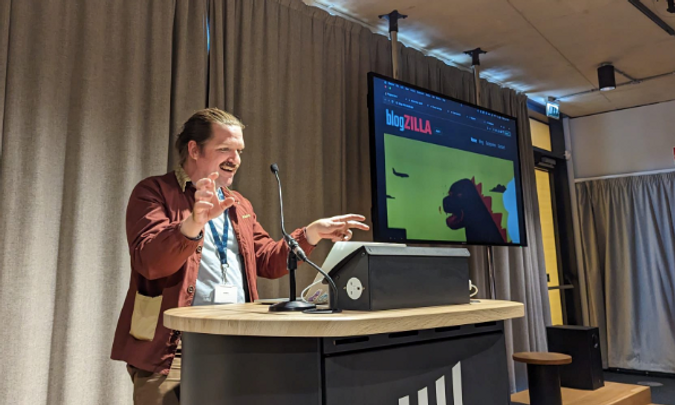
If you're reading this, there's a good chance you've heard of crypto and blockchain but don't know what an NFT is. Don't worry, you're not alone! Non-fungible tokens are a relatively new concept in the world of cryptocurrency and many people are still trying to understand them. In this article, we'll explain what an NFT is (known as an ERC721 standard for developers of blockchain) and how they work. So, what are you waiting for? Let's get started!
1. What are NFTs and what can they be used for?
2. What are some of the most popular NFTs so far?
What are NFTs and what can they be used for?
Non-fungible tokens are a new type of digital asset that is unique, meaning each one is different from the next. They can be used for a variety of purposes, such as digital collectables, game assets, and identity verification.
NFTs are created using blockchain technology, which is a secure and transparent way to store data. This makes them ideal for digital assets that need to be tracked and verified. NFTs can also be sold or traded on online platforms, making them a valuable commodity in the world of cryptocurrency.
How do NFTs work and what makes them different from other tokens?
NFTs are created using something called the ERC721 standard. This is a set of guidelines that developers use to create unique tokens on the blockchain. Each NFT has its own serial number, which allows it to be tracked and verified. This also makes them easier to trade and sell online.
What are some of the most popular uses for NFTs so far?
One of the most popular uses for NFTs is as digital collectibles. Many people are collecting rare or unique items such as artwork, comic books, or trainers and storing them in a digital format using NFTs. This allows them to be easily traded or sold online with minimal fuss.
NFTs are also being used to create digital versions of real-world assets such as cars, houses, and land. These can be used for a variety of purposes such as asset tracking, verification, or even gaming.
How will the future of NFTs unfold and what potential do they have for businesses and consumers alike?
The future of NFTs is still unfolding but there is no doubt that they have a lot of potential for both businesses and consumers alike. For businesses, NFTs provide a secure and transparent way to track and store data about their products or assets. This can be used for a variety of purposes such as inventory tracking, quality control, or even marketing.
For consumers, NFTs provide a way to own unique digital assets that can be used for a variety of purposes. They also allow you to store your assets in a secure and tamper-proof environment that cannot be stolen or hacked like traditional online storage solutions.
What are some of the most popular NFTs so far?
Digital art has seen an explosion as a use case for NFTs. One of the key reasons is the creation of scarcity and historically important collections, such as those listed below, but also due to the fact that they offer, in certain cases, an important historical value in the evolution of blockchain technology.
Crypto Kitties
Crypto Kitties was one of the first (if not the first) mainstream NFT collections. With a total collection size of 1,000,000 kitties, they allow owners to trade and pair kitties together to generate offspring.
Whilst you can pick up a Crypto Kitty for a relatively low fee today, given the total number available. They opened the door to a future of NFT's and opened the mainstream eyes to what the new ERC-721 token could do for Crypto.
Bored Ape Yacht Club
The Bored Ape Yacht Club (BAYC) is one of the most notable, if not the most notable NFT collection in the world. The collection floor price (the minimum you can buy into) has grown rapidly since it was founded and now has thousands of members from all over the world.
The collection includes 10,000 procedurally generated "apes", each containing a certain rarity for their elements. This gives each piece in the collection an overall rarity value. At the time of writing, BAYC has traded over 663,000 Ether between buyers and sellers of the pieces, with Ether being valued at c$1,300 (down from its all-time high of c$4,800) that's a value of trades at today's prices of $861,900,000. Giving an indication of just how valuable the NFT collection is.
Unlock Protocol
Whilst NFTs have shown real use case in the art world, the future infrastructure that NFTs can really deliver has yet to be truly appreciated and realised. One such protocol is Unlock Protocol which is using NFTs as membership tokens. With Unlock Protocol, you can build membership websites offering access to content, community and even subscriptions to real products. Unlock Protocol acts as a window to that world, one that over time will become more prominent on the internet.
Boson Protocol
Boson Protocol brings together the physical world, as well as the digital world to match products with real world items and NFT proof of collectorship. In the future we will see more and more physical and digital ownership.
Conclusion on NFT's
NFTs are a new type of digital asset that uses blockchain technology to create unique and verifiable tokens. The future of NFTs, just like blockchain technology, is still unfolding. What we know is that they have a lot of potential for businesses and consumers alike. If you would like to learn more about blockchain and NFTs, you can join our Introduction to Blockchain one day bootcamp. For more experienced software developers, you can join our more intensive Solidity based blockchain coding bootcamp, to learn how to mint your own NFTs as well as a number of other use cases in crypto.
About the Author
James has 8 years with Fortune 200 US firm ITW, experience of managing projects in China, USA, and throughout Europe. James has worked with companies such as Tesco, Vauxhall, ITW, Serco, McDonalds. James has experience in supporting start-up and scale up companies such as Readingmate, Gorilla Juice and Harvest London. James completed his MBA at the University of East Anglia in 2018.

